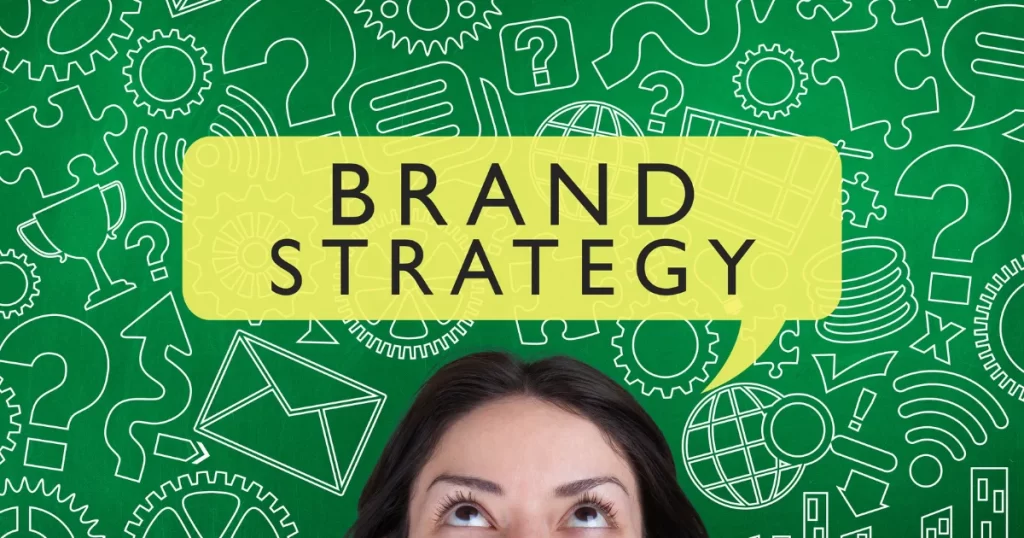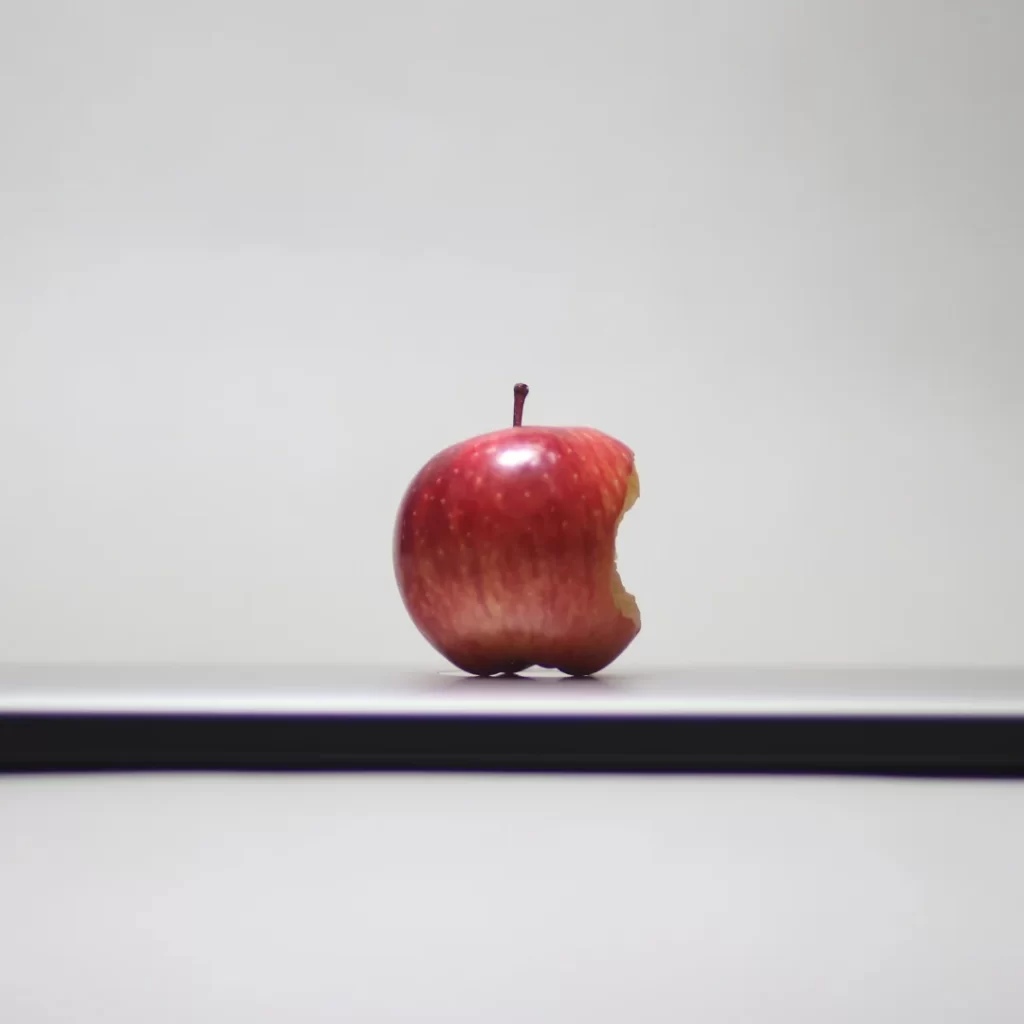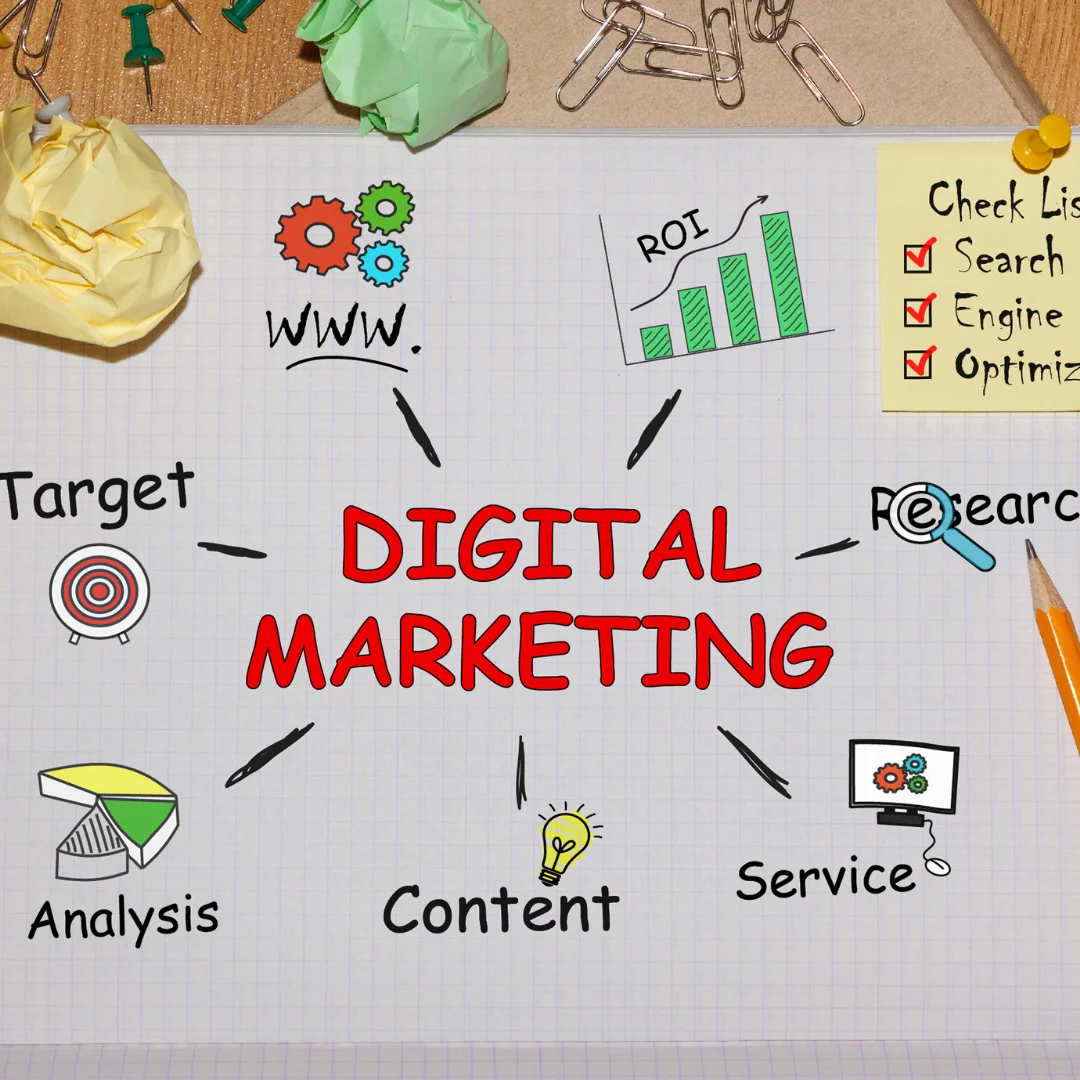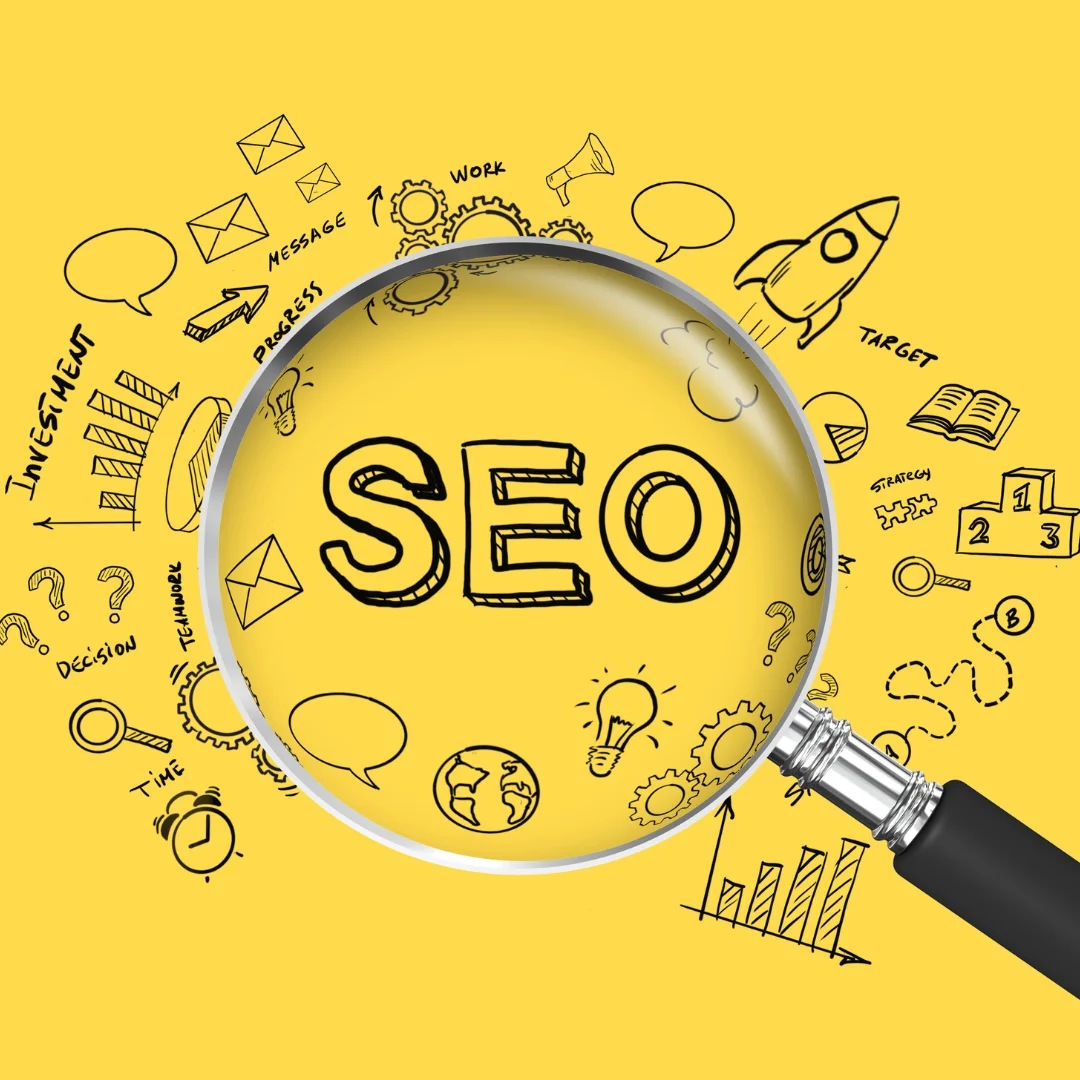Apple Inc. is more than a tech company; it’s a global cultural phenomenon. From transforming the humble personal computer into a sleek, must-have gadget to inspiring millions to line up at dawn for the latest iPhone, Apple’s marketing prowess is a study in brilliance. In this case study, we’ll peel back the layers of Apple’s brand marketing strategy and explore the key elements behind its jaw-dropping success.
Let’s dive into the genius of Apple—where design meets psychology, and simplicity sells like hotcakes (or, should we say, hot iPads).
Understanding Apple’s Brand Marketing Strategy

Apple’s marketing strategy is a masterclass in knowing its audience better than they know themselves. It’s not just about selling gadgets; it’s about crafting experiences that make customers feel understood, valued, and, let’s face it, cooler than everyone else.
Who Buys Apple?
Demographics:
Apple’s loyalists are a fascinating crowd. Think of affluent urbanites aged 18–45 who are ready to drop a small fortune on sleek devices they’ll defend as “essential” at dinner parties. These are people who equate the Apple logo with status, innovation, and a touch of exclusivity.
Whether it’s a 20-something millennial streaming their morning yoga class on an iPad or a corporate professional using a MacBook to power through spreadsheets, Apple products are as much a lifestyle statement as they are a utility.
Quick Stats on Apple’s Core Audience
| Age Range | Income Level | Key Traits |
|---|---|---|
| 18–24 | $40K–$60K | Tech-savvy, social media-heavy |
| 25–34 | $60K–$100K | Brand-conscious, loyal |
| 35–45 | $100K+ | Status-driven, affluent |
Psychographics:
Apple doesn’t just aim at the wallet; it targets the psyche. The typical Apple buyer isn’t looking for “just another device.” They’re searching for an extension of their identity. These are people who:
- Crave innovation but demand simplicity.
- Want to be part of a creative and forward-thinking tribe.
- Feel a little smug about their iPhone versus your generic Android.
It’s the same mindset that makes a $1,000 iPhone feel like a bargain—it’s not a purchase; it’s an investment in you.
Tapping into Aspirations
Apple’s ability to identify and amplify consumer aspirations is legendary. It doesn’t just promise features; it promises transformations. A MacBook isn’t just a laptop; it’s a productivity powerhouse. An Apple Watch doesn’t just track your steps; it proves you’re the fittest person in the office.
“Apple has perfected the art of building a cult of personality around its products. They don’t sell features—they sell a feeling. That’s a level of branding most companies can only dream of.”
— Seth Godin, Marketing Expert.
The Magic of Personalization
Apple’s knack for personalization takes the “we know you” vibe to a whole new level. From targeted email campaigns that know exactly when you’re due for an upgrade (because, of course, they do) to tailored product recommendations, the brand makes you feel like the center of the tech universe.
Case in Point:
When Apple introduced the iPhone Upgrade Program, it wasn’t just a financial strategy. It was a genius move to keep customers tethered to the brand. By offering annual upgrades, Apple didn’t just sell devices; it sold the promise of always being ahead of the curve.
Apple’s Personalization Tactics
| Strategy | How It Works | Customer Impact |
|---|---|---|
| Tailored Email Campaigns | Data-driven suggestions for upgrades | Higher engagement and loyalty |
| Apple Store App | Personalized shopping experience | Increased conversions |
| Device Ecosystem Integration | Seamless connectivity between devices | Elevated customer satisfaction |
The Takeaway
Apple’s audience strategy is as much about exclusion as inclusion. By narrowing its focus to affluent, aspirational buyers, it builds products and campaigns that resonate deeply, creating a sense of belonging that feels luxurious, exclusive, and endlessly desirable.
Would someone with a tight budget prefer a cheaper alternative? Sure. But they’d also be missing out on the “cool factor” that Apple wraps so effectively into its brand. And for Apple’s core audience, that’s priceless.
Product Differentiation through Innovation
Innovative Design
Apple’s design philosophy is like haute couture for tech—sleek, exclusive, and effortlessly iconic. Each curve of the iPhone, every seamless edge of the MacBook, screams an attention to detail that rivals luxury watches. This isn’t accidental. Jony Ive, the former Chief Design Officer, infused a minimalist ethos that turned functional gadgets into objects of desire. Competitors release devices. Apple crafts statements.
And let’s not overlook the magic in their material choices. Aluminum unibodies, ceramic shield displays, and surgical-grade stainless steel create products that feel premium. Holding an Apple device isn’t just using tech; it’s an experience, one that whispers: You’re part of something elite.
Cutting-Edge Technology
Apple doesn’t just innovate—it redefines. The App Store didn’t merely offer apps; it birthed an entirely new economy. Features like Face ID and the M1 chip were leaps ahead of the pack. Face ID, for example, wasn’t just a biometric gimmick. It combined neural engines, infrared cameras, and flood illuminators to create the most secure unlocking system of its time.
And then there’s the M1 chip. Apple’s bold move to ditch Intel wasn’t a gamble—it was a masterstroke. The M1 was fast, energy-efficient, and a symbol of how Apple controls every part of its ecosystem. Every innovation isn’t just a feature; it’s a flex.
Case Study: The 2007 iPhone Launch
Steve Jobs didn’t just launch a phone—he unleashed a tech revolution. The iPhone was part phone, part iPod, part internet device. It was the Swiss Army knife of gadgets, a pocket-sized revolution. No physical keyboard? Revolutionary. A capacitive touchscreen? Game-changing. Other brands were playing chess; Apple invented a new game altogether.
Creating Desire with Exclusivity and Scarcity
Controlled Product Releases
Apple doesn’t throw products onto shelves; it curates moments. Launch events aren’t product announcements—they’re spectacles. The meticulous pacing of the presentation, the build-up to the reveal, and the iconic “available next Friday” make each product release feel like the Oscars of tech.
Limiting initial availability isn’t a supply chain hiccup; it’s strategy. Scarcity breeds desire. The longer the lines outside Apple Stores, the stronger the FOMO. Ever seen someone camp overnight for a Samsung? Exactly.
Hype Generation
Apple’s marketing is a masterclass in anticipation. From cryptic invites featuring an obscure Apple logo to teaser videos that show everything and nothing, every campaign fuels a frenzy. Social media explodes with speculation, ensuring Apple trends before a single product hits the market.
Psychological Hack
Scarcity triggers the brain’s “must-have” response. When you think you might miss out, the perceived value skyrockets. Apple turns every product launch into a treasure hunt, where the reward isn’t just a gadget—it’s status.
Building a Loyal Customer Base through Experience and Ecosystem Integration

Seamless Ecosystem
Apple’s ecosystem isn’t just a series of products—it’s a well-oiled, interconnected utopia. Texts sync across devices. Handoff lets you pick up where you left off, whether it’s a call or a document. AirPods connect automatically because, of course, they do. The ecosystem is Apple’s not-so-secret weapon. It’s not just about ease; it’s about dependency.
Want to leave Apple? Good luck. Your iCloud data, iMessage threads, and perfectly synced devices say otherwise.
Apple’s ecosystem is a digital fortress. Once you’re in, leaving feels like a betrayal.”
— Alex Johnson
Exceptional Customer Service
Apple doesn’t just sell products; it nurtures relationships. Genius Bars turn customer service into a bespoke experience. Problems aren’t just fixed; they’re solved with empathy. That’s why 80% of Apple customers wouldn’t dream of switching brands.
Leveraging Premium Pricing as a Brand Positioning Strategy
Value-Based Pricing
Apple doesn’t compete on price—it owns the premium segment. The $1,000 price tag for an iPhone isn’t just for the hardware; it’s for the promise of prestige, innovation, and an unboxing experience so satisfying it could double as therapy.
Psychological Impact
High prices act as a gatekeeper. They ensure Apple products remain aspirational, reinforcing their luxury appeal. Buying an iPhone isn’t a transaction; it’s a declaration.
Fun Fact
Did you know the average cost of an iPhone surpasses the GDP per capita of some countries? Yet, millions still line up to buy. That’s the power of a well-crafted premium image.
Communicating Emotionally through Simplistic Advertising
Minimalism
Apple’s ads aren’t cluttered with jargon or hard sells. A simple white background, a single product shot, and a tagline—“Think Different,” anyone?—is all it takes. This less-is-more approach lets the product speak for itself.
Emotional Storytelling
Campaigns like Shot on iPhone tug at heartstrings. Real moments captured by real people show that Apple products aren’t just tools; they’re companions for life’s most memorable moments.
Case Study: The 1984 Super Bowl Ad
Apple’s “1984” ad wasn’t selling a computer—it was selling rebellion. It cast Apple as the underdog challenging conformity. That single ad didn’t just sell the Macintosh; it redefined tech advertising.
Ensuring Consistency Across All Brand Touchpoints

Apple’s devotion to consistency is less of a marketing tactic and more of a sacred ritual. Every Apple interaction—be it unboxing a product, scrolling through the website, or stepping into an Apple Store—feels like a seamless continuation of the brand’s identity. This obsessive attention to detail doesn’t just create fans; it creates devotees.
Why Consistency is Apple’s Secret Weapon
Imagine this: you buy a product with a pristine, minimalist design, only to find the manual is cluttered with Comic Sans and bad grammar. That jarring inconsistency shatters trust. Apple ensures you never face such a whiplash. From the weight of the box to the glow of the software, every touchpoint is intentionally designed to convey the same message—“We’re sleek, smart, and worth every penny.”
Core Values in Action
Apple’s consistency starts with its core values: simplicity, innovation, and creativity. These are not buzzwords slapped onto a corporate mission statement; they are the lifeblood of the brand.
- Product Design: A minimalist approach ensures the products are instantly recognizable. There’s no clutter, no unnecessary embellishment—just pure, functional beauty.
- Storefronts: Apple Stores are sanctuaries of order, where products are displayed like art and chaos is kept at bay.
- Marketing: Even their ads avoid jargon, sticking to simple, clean messaging that feels accessible and aspirational all at once.
Table: Key Elements of Apple’s Brand Consistency
| Element | Example | Impact |
|---|---|---|
| Design Aesthetic | Sleek, minimalist product designs | Establishes a unique and recognizable identity. |
| Messaging | Clear, jargon-free copy | Enhances relatability and clarity, making tech feel human. |
| User Experience | Intuitive interfaces across devices | Builds trust and loyalty by delivering on expectations. |
| Packaging | Unboxing as an experience | Creates a sense of anticipation and luxury. |
| Retail Spaces | Consistent store layouts worldwide | Reinforces brand familiarity and comfort. |
Packaging: The Art of the Unboxing Ritual
Unboxing an Apple product feels like receiving a gift. The box is sturdy, the materials are premium, and every element is perfectly aligned. Even the sound of the box sliding open has been engineered for maximum satisfaction.
Apple’s packaging doesn’t just house products—it tells a story. It whispers, “This isn’t just another gadget; this is a masterpiece.”
Unified Branding: From URL to IRL
Whether you’re on Apple’s website, interacting with an ad, or walking into a store, the experience feels the same. The visuals are clean, the fonts are uniform, and the tone is consistent.
- Example: Apple’s website design mirrors the in-store experience. White backgrounds, generous spacing, and crisp images ensure a clean, distraction-free environment.
- Impact: This uniformity reinforces trust and makes the brand instantly recognizable.
Enhancing Customer Engagement through Experiential Retail Spaces
Apple doesn’t just sell products—it sells an experience. Enter an Apple Store, and you’re stepping into the future.
Immersive Design: Where Tech Meets Art
Apple Stores feel more like architectural marvels than retail spaces. From the glass staircases to the Genius Grove, every inch of the store has been meticulously designed to embody Apple’s ethos.
- Open Layouts: Unlike traditional stores crammed with shelves, Apple Stores use open spaces to encourage exploration.
- Aesthetic Harmony: The materials used—glass, steel, and wood—create a sleek, modern vibe that screams sophistication.
Hands-On Experience
Apple wants you to touch, feel, and play with its products.
- Workshops and Demos: Whether it’s learning to edit photos on an iPhone or understanding MacOS, these sessions engage customers beyond the point of sale.
- Genius Bar: The tech support is friendly, knowledgeable, and never condescending—fostering trust and loyalty.
Adapting Marketing Strategies for Global Markets

Apple’s success isn’t just about being consistent; it’s about being adaptable.
Localized Campaigns: Speaking the Language of Every Market
Apple knows that what sells in Tokyo might flop in Toronto. So, it tailors its messaging accordingly.
- Japan: Ads often highlight precision, craftsmanship, and compact designs—values deeply ingrained in Japanese culture.
- India: Campaigns emphasize durability and aspirational innovation, appealing to a rapidly growing middle class.
- China: Apple leans into exclusivity and luxury to align with consumer preferences.
Global Appeal: The Balancing Act
While Apple adapts its campaigns, it never compromises its core messaging of simplicity and innovation.
“Apple’s ability to balance global consistency with local adaptation is marketing gold.”
– Sarah Lopez, Brand Strategist
Embracing Digital Channels for Promotion in the Modern Age
Apple doesn’t just dip its toes into digital marketing—it cannonballs in.
Social Media: Turning Customers into Ambassadors
Apple’s Instagram feed is a carefully curated gallery of stunning visuals. Campaigns like #ShotoniPhone transform regular users into brand advocates, showcasing what the product can do in the real world.
- Example: A breathtaking landscape shot on an iPhone isn’t just a photo; it’s a subtle reminder that your current phone probably can’t do that.
Online Advertising: Omnipresence Redefined
Apple dominates digital advertising with precision-targeted campaigns. Whether you’re Googling “best smartphone” or scrolling through TikTok, Apple ensures its products are front and center.
Table: Apple’s Digital Marketing Arsenal
| Channel | Strategy | Impact |
|---|---|---|
| Social Media | User-generated content (#ShotoniPhone) | Builds community and trust. |
| Email Campaigns | Personalized recommendations | Keeps customers engaged and drives retention. |
| Paid Ads | Data-driven targeting | Ensures maximum visibility and ROI. |
Apple’s mastery of consistency, retail innovation, and digital marketing isn’t just a business strategy—it’s an art form. From meticulously crafted touchpoints to immersive experiences, Apple’s approach ensures that every interaction is as sleek and seamless as its products. And let’s be honest, isn’t that why we keep coming back?
Conclusion
Apple’s brand marketing strategy is a masterclass in innovation, exclusivity, and emotional connection. By blending premium pricing, minimalist advertising, and an ecosystem that feels like a VIP club, Apple has not just sold products—it’s sold a lifestyle.
Call to Action
Inspired by Apple’s brilliance? Share your thoughts in the comments below or explore how your business can create its own marketing success story!





